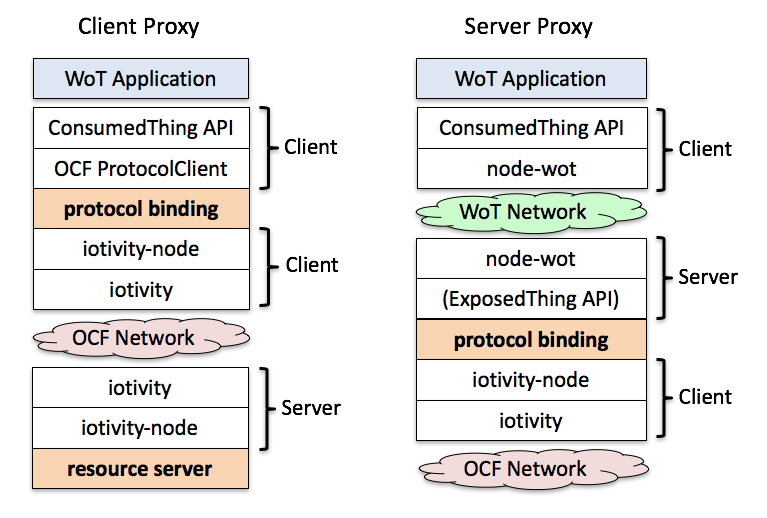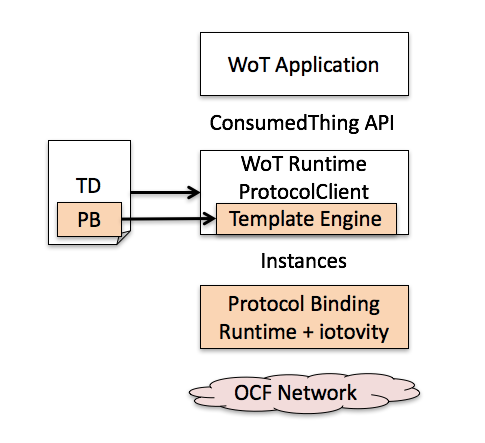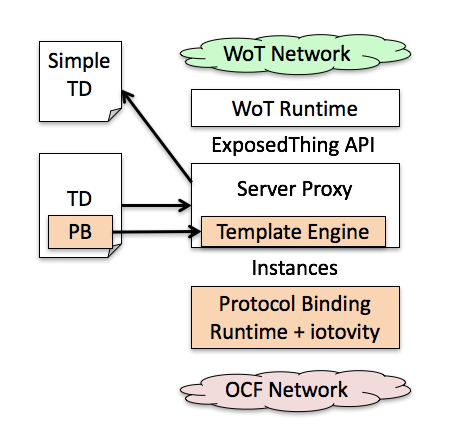Assumptions and Design Principles
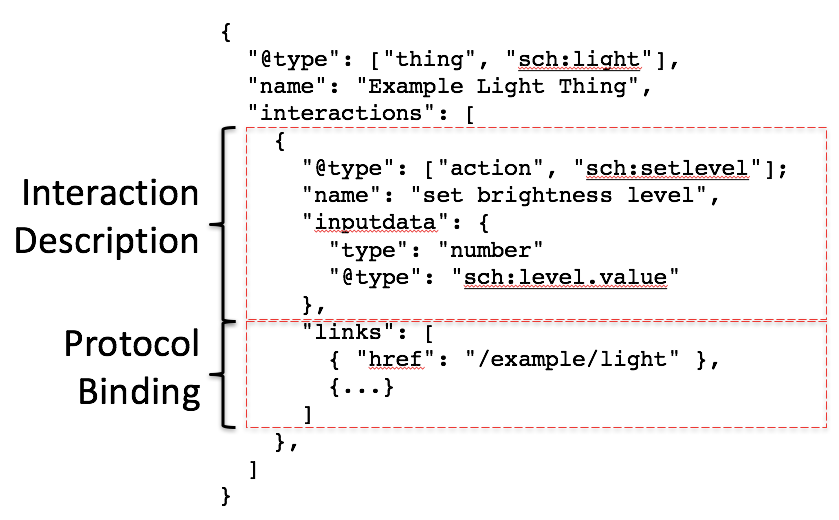
TD Interaction Description
The interaction description part of a Thing Description describes an event, action, or property interaction which is exposed by a thing. Each interaction description contains semantic annotation that describes the type of interaction and its application class, and one or more link elements containing URIs that point to the API entry points for the interaction.
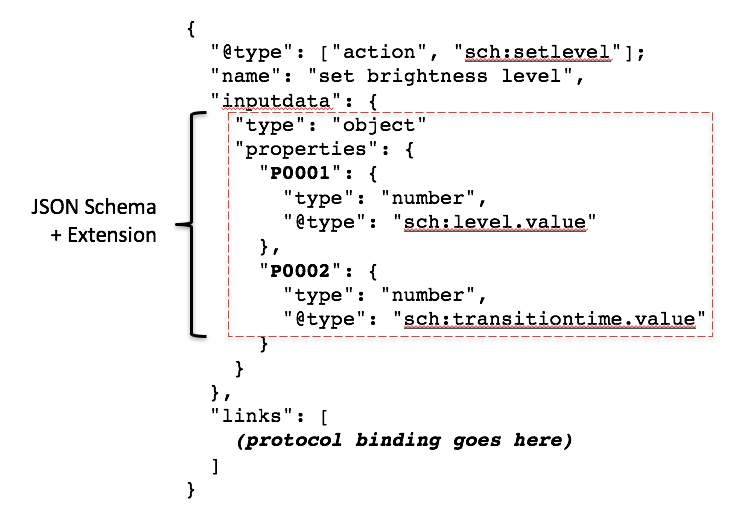
Protocol Binding
Protocol bindings map abstract WoT interactions to concrete protocol operations. There is currently a set of generic REST protocol bindings for HTTP and CoAP, which are defined in the Current Practices document. The default protocol binding is determined by the URI scheme of the link (http or coap), and follows a well-defined REST API for events, actions, and properties.
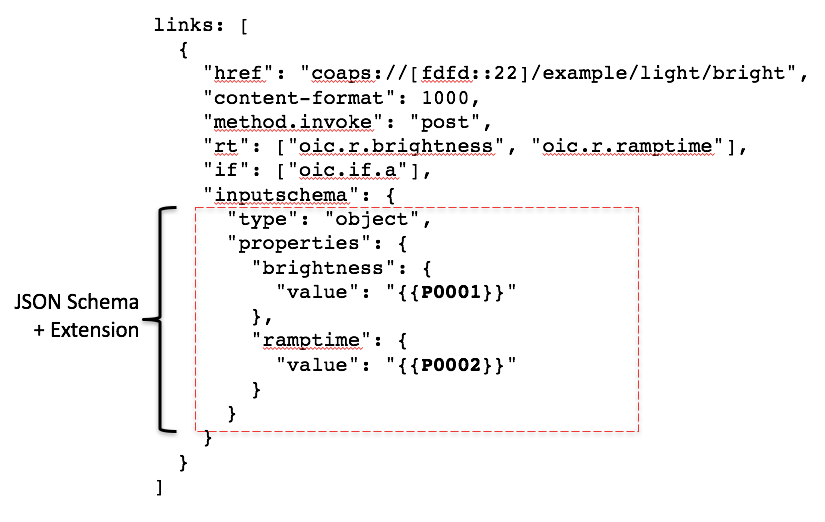
Protocol Adaptation
Device protocols from various standards organizations have peculiar patterns for exposing the low level "traits" that the protocol uses to encapsulate and communicate information.
For example, OCF Resource Types expose a REST API that uses IETF concepts of Resource Type (rt) and Interface Type (if). By contrast, LWM2M/IPSO Smart Objects expose an hierarchy of object ID (collections) and resource ID (items) where the ID numbers provide the semantic identification.
These may all use a common communication protocol like CoAP, and representation format like CBOR or JSON, but then require special options like resource type, interface type, content-formats, data types, and payload schemas.
Discovery
Discovery of things and traits that map to TD interactions is outside the scope of protocol bindings as currently defined; in this specification we only cover the event, action, property part of the interaction model.
It is assumed that discovery of things on the connected device ecosystem results in a set of discoverable Thing Description instances, corresponding to the discovered things, and will then use the TD discovery mechanisms already defined in the W3C WoT WG/IG.
TD Structure
Except for the link element, the interaction description has the same structure for all instances of a particular thing, regardless of the protocol binding being used. The protocol binding template is implemented as an extension to the "link" element of the interaction pattern description.
Input and output data
Input and Output Data are described in the interaction description and applied to the protocol binding using the information in the "link" element as a binding template.
Any data constraints imposed by the underlying ecosystem, such has range, units, resolution/granularity must be exposed by the interaction description in the inputData and outputData elements of the Inteaction Description. The implementation may provide a means to translate and convert units and scales between the WoT Scripting API and the underlying device traits.
Isolation
The interaction description part and protocol template ("link") part are meant to be isolated from each other and are coupled only through the inputData and outputData elements. There must be therefore consistent labeling of data elements between the interaction description and the binding template.
General purpose protocol driver
There needs to be enough information in the binidng template to enable a generic protocol driver to construct requests using input data elements and parse output data elements from responses.
For example, binding templates for RESTful protocols will look like submission forms, describing the method and options to use to construct the request, as well as a structural description or template to be used to construct and parse data payloads.
